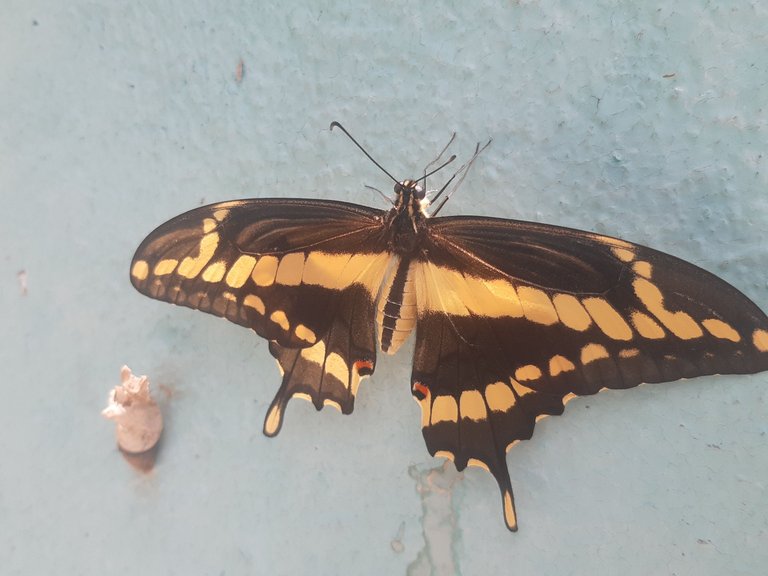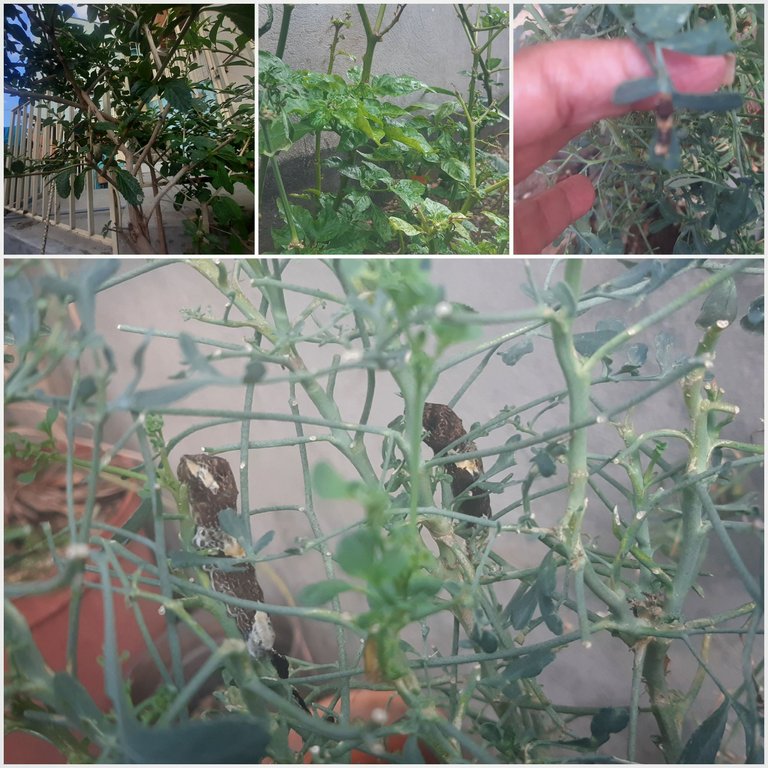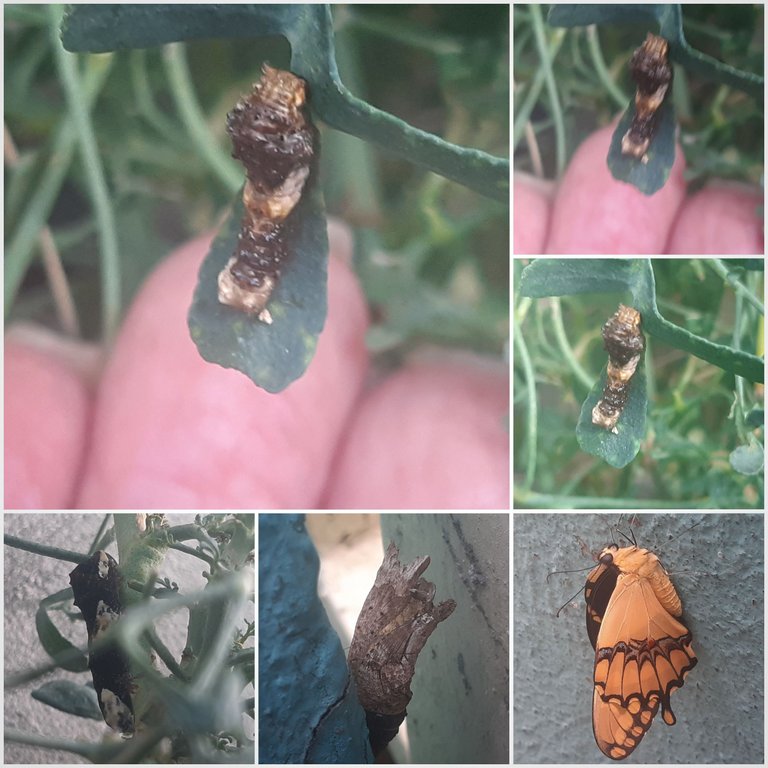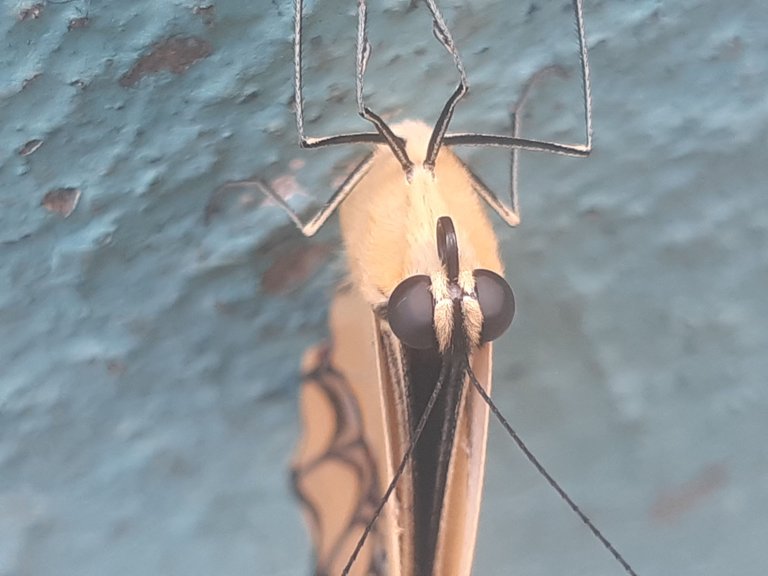Pollinators in my Garden?

Greetings garden community, it is a pleasure for me to share with you this publication related to the challenge of the week. I am not here to tell you about bees because in my garden I don't have flowers yet, we know that nectar is their favorite food and therefore, if they don't have it they will rarely come near.
But do other pollinating insects visit my garden?
No doubt they do. Many butterflies come to lay their eggs on the leaves of the rue plant and also on the lemon balm plant as it is known in Venezuela.

I recently published a post expressing my concern about the number of caterpillars that occupy a place on my plants. I expressed my dilemma between leaving them there or throwing them out of the garden. When they become pests, they kill everything and I really don't want that to happen.
Even so, I am aware of the importance of the function exerted by insects on the ecosystem and to exterminate them would be a crime.
Here I leave a record of several hatchings of butterflies Giant Mealybug or also called orange tree butterfly. I was surprised by their size and the small size of their cocoon.

I don't have any problems with pollinators, rather I consider that I have too many and I don't know what to do with them. So far I have left the caterpillars alone, but I run the risk of losing the rue plant, don't I?
When you have plants it is easy to encourage pollinators, I avoid disturbing the insects and let them carry out their life cycle. I listen to gardening advice and try to do things in the best way possible.
I am always open and receptive to any information and now that I am here I would like to know what is the best way to leave or remove the caterpillars from the garden?


![SPANISH]
Saludos comunidad de los jardines es un placer para mi compartir con ustedes esta publicación relacionada con el reto de la semana. No vengo hablarle sobre las abejas porque en mi jardín aún no tengo flores, sabemos que el néctar es su alimento favorito y por ende, si no lo tienen rara vez se acercarán. Pero, ¿visitan mi jardín otros insectos polinizadores? Sin duda que sí. Llegan muchas mariposa a dejar sus huevecillos sobre las hojas de la planta de ruda y también sobre la planta del toronjil como le conocemos en Venezuela. Recientemente saqué una publicación manifestando mi preocupación por la cantidad de orugas que ocupan un lugar sobre mis plantas. Manifesté mi dilema entre dejarlas ahí o echarlas del jardín. Ellas, al convertirse en plagas, acaban con todo y realmente no quisiera que eso sucediera. Aún así, soy consciente de la importancia de la función ejercida por los insectos sobre el ecosistema y exterminarlos sería un crimen. Por acá dejo registro de varias eclosiones de mariposas Cometa Gigante o también llamada mariposa de los naranjos. Quedé sorprendida por su tamaño y lo pequeño de su capuyo. No tengo problemas con los polinizadores más bien considero que tengo muchos y no sé qué hacer con ellos. Hasta ahora he dejado tranquilas a las orugas pero, corro el riego de perder la planta de ruda ¿O no? Cuando se tienen plantas es fácil fomentar presencia de polinizadores, evito molestar a los insectos y dejó que lleven a cabo su ciclo de vida. Escucho los consejos que me dan sobre jardinería y trato de hacer las cosas de la mejor manera posible. Siempre estoy abierta y receptiva ante cualquier información y ahora que llego por acá gustaría saber qué es lo más indicado en mi caso dejar o sacar las orugas del huerto?
¡Gracias por leer, comentar y votar!

By @ylich
It's tough, sometimes, allowing enough insects for birds and other wildlife, and allowing your garden to survive! Thanks for sharing - that butterfly is lovely!
We support gardening, homesteading, cannabis growers, permaculture and other garden related content. Delegations to the curation account, @gardenhive, are welcome! Keep an eye out for our weekly writing prompts and our monthly #gardenjournal challenge on the 1st of each month.
Sometimes it's hard to make decisions, but you have to do it. Thanks for your support.
It is a big butterfly with beautiful colors
Wow, what a beauty that butterfly, what beautiful colors and what a perfect drawing as only nature knows how to do ❤️
I hope you can find a solution for your plants, I don't have the answer, but maybe on the internet or some gardening site they can guide you to scare them away without the need of damaging them 🙏 maybe something that can repel them so they don't touch the plants.
I love butterflies maybe that makes me more sensitive to them. I will follow your recommendation and see what you do in this case. Thank you for your comment.
I love to see the whole life process of butterflies. I've seen that one several times in my garden. But I have not been able to keep track of its entire metamorphosis.
It is an interesting process. I have seen when the butterfly arrives to lay its eggs on the plant and I have also seen the caterpillars grow and they always look the same. When the caterpillar grows it looks very ugly hahaha. It has a kind of curly tongue split in two. I was surprised when I saw it for the first time. The insect's head grows much bigger than its body. When it is already in adult stage it looks for space to create the cocoon and finally the hatching. Greetings 🤗